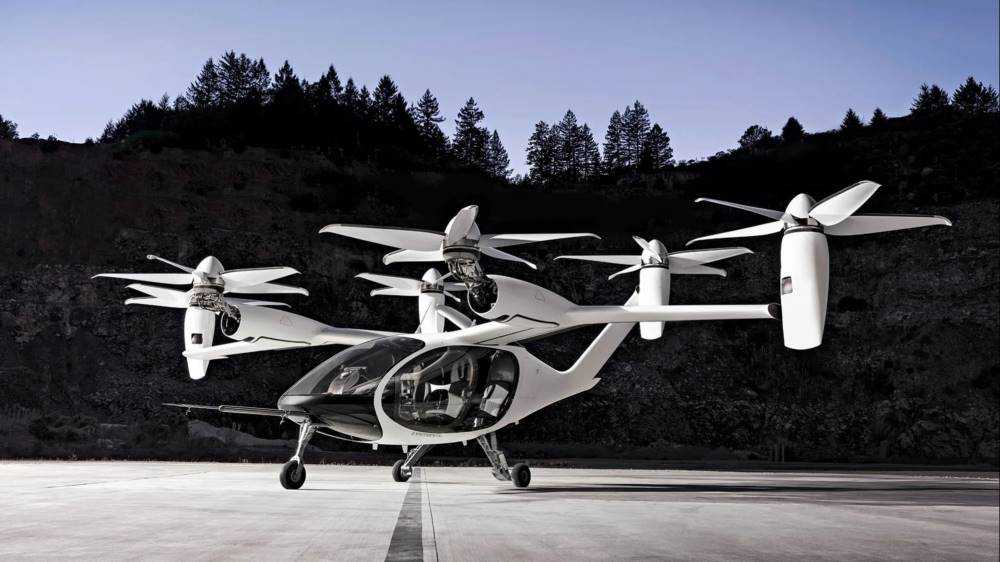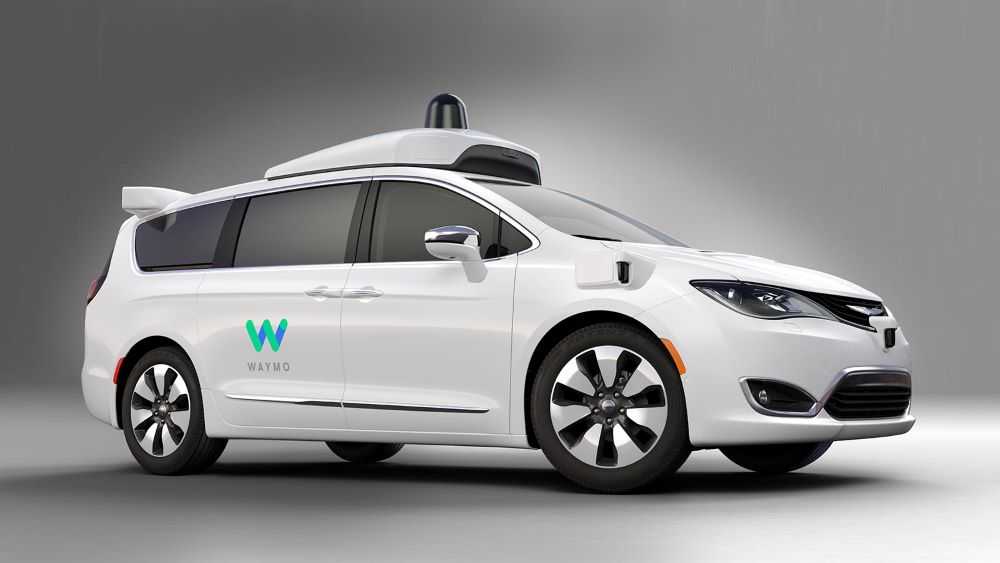5 futuristic inventions that prove partnerships are the future of business
- Publication date
- Author
- Imogen Beech
- Reading time
- 9 minute read
We bang on a lot about how strategic partnerships are the future of business. But they’re not just powering the business world. Oh, no. They’re also powering the future.
From medical advances to space travel, flying cars to artificial intelligence, strategic partnerships are behind some whacky real-life projects that could be straight out of a sci-fi film. Here are some of our favourites.
If you’d told us 20 years ago that flying cars would actually be a thing in our lifetime, we simply wouldn’t have believed you. But according to some of the firms working on them, they’re on track to be used for commercial passenger travel as early as 2024!
Let’s start at the beginning. Although they’re commonly known as ‘flying cars,’ the vehicles we’re talking about are more accurately called eVTOLs, which stands for electric vertical takeoff and landing. Technically, they’re electric helicopters as they take off and land vertically rather than travelling along a runway like a plane.
Regular helicopters are known as ‘VTOLs’ so add an ‘e’ for ‘electric’ and there you go. You have a flying car!
Anyway, why are we banging on about eVTOLs?
Well, there’s a ton of strategic partnerships in this space. And we mean a ton. One of the best-known companies to form partnerships in it so far is Uber – everyone’s favourite ride-hailing app.
Uber created something called Uber Elevate, where they partnered with a dozen or so companies who promised to deliver eVTOLs that met certain specs. They also partnered with NASA and the FAA to develop an air traffic management system to direct their fleet. And, they partnered with architects and real-estate developers to design mega-skyports where vehicles could land and passengers could hop on and off. Woah!
However, Uber Elevate has now been bought by eVTOL maker Joby Aviation. Joby Aviation has a ton of partners who are helping it to develop commercial flying cars (we know, we know, they’re called eVTOLs but ‘flying cars’ just sounds so much cooler!). One of these partners remains Uber, which recently invested $75 million in the company. Another is Toyota.
Not only did Toyota invest a whopping $394 million in Joby Aviation’s Series C financing round. But it’s also committed to sharing its expertise in manufacturing, quality and cost controls with the eVTOL manufacturer, making this a far-reaching strategic partnership that could strongly impact the company’s strategic direction – not least because Toyota’s Executive Vice President will also be joining Joby Aviation’s board of directors.
These are just a few examples of strategic partnerships within the eVTOL space. Elsewhere, you can find Wisk, a joint venture between The Boeing Company and Kitty Hawk Corporation. Wisk has created the first all-electric, self-flying, vertical takeoff and landing air taxi. And, in cargo delivery land, Beta Technologies has secured a deal to sell aircraft to UPS, and has also partnered with Blade who’ll be providing it with 20 aircraft.
Ultimately, it feels like everyone wants in on the action. And, in a space as complex and operationally demanding as eVTOLs, it makes perfect sense that companies are choosing to pool their expertise and resources to get ahead of the competition and be part of the inevitable disruption.

While we’re on the subject of cars, there’s another sci-fi-esque invention that’s riddled with strategic partnerships. Driverless cars! Or, as they’re more accurately called, ‘self-driving’ or ‘autonomous’ cars. You know, cars that are driven by… well… themselves!
Until 2016, there weren’t really any partnerships in this space. The market was dominated by tech startups and established car manufacturers, all working independently and competing against each other. But the race to create safe, reliable and cost-effective self-driving cars has turned out to be a lot more expensive than anyone originally anticipated.
In 2016, Google and Fiat Chrysler teamed up to create a ‘first of its kind’ partnership, where Google’s self-driving technology was integrated into a Chrysler Pacifica hybrid minivan. The partners agreed to share engineering responsibilities, with engineering teams from both working together at a facility in Michigan.
Since then, a whole host of similar partnerships have sprouted between tech startups and established automakers. Just a few examples are General Motors and Cruise; Aptiv and Hyundai; and Argo AI, Ford and Volkswagen.
Even Google’s self-driving project (which has since become Waymo, a sibling company of Google) has continued to add strategic partnerships to its rostra. In addition to its long-term partnership with Fiat Chrysler, it’s partnered with Jaguar, Renault, Nissan, Volvo and Magna. In fact, there are barely any companies attempting to tackle the challenge of self-driving vehicles alone (with the exception, perhaps, of Tesla).
While self-driving startups largely began by attempting to build the whole self-driving car themselves, it’s become clear that this isn’t necessary. Instead, by teaming up with partners who already have expertise in car manufacturing, tech startups can focus on developing the parts of a car that replace the driver, such as sensors. This enables them to be more focused on where they place their attention and expertise, sharing the costs and reaching their goals quicker.

We’ve all heard of partnerships in the healthcare industry. But did you know that there are partners working together to actually reverse ageing and extend human life?!
That’s right. It’s a concept that’s being backed and largely financed by tech billionaires like the CEO of Amazon, Jeff Bezos, and the co-founder of PayPal, Peter Thiel. In fact, according to OneZero, the global anti-ageing market was worth a whopping $42.5 billion in 2018 and is expected to reach $55 billion by 2023. In other words, it’s big business.
As our bodies age, they become more susceptible to diseases. The idea behind longevity science is that, instead of treating each disease individually, we can tackle the underlying cause of ageing to reduce the amount of time our bodies spend in decline and therefore delay the onset of disease.
Let’s look at some of the strategic partnerships behind it.
Life Biosciences is one of the leading startups attempting to extend human life. But it doesn’t work alone. Instead, it’s a holding company of six subsidiary startups that are each on a mission to tackle some of the underlying causes of ageing in the body, including metabolism, chromosomal instability and stem cell exhaustion.
By effectively designating areas of research and the development of medicines to multiple startups, Life Biosciences is able to hedge its bets and, hopefully, reach its goal of extending human life quicker.
Another leading company in the space is Calico Labs, which was established by Google. With a wish to ‘combine the best parts’ of a traditional biotechnology company and an academic institution ‘without the constraints of either,’ Calico partners extensively with organisations ranging from universities to pharmaceutical companies like AstraZeneca.
One of Calico’s key longstanding partners is AbbVie, a pharmaceutical research and development company. The pair have collaborated since 2014 with Calico responsible for research and development in the longevity space, and AbbVie providing access to resources such as structural biology, medicinal chemistry and protein production. Both contribute financially. By working together in this way, the parties can accelerate their goals of discovering new technologies and developing therapeutic programs in longevity science.
Ultimately, in a field that is still little understood, strategic partnerships help companies to learn from one another and combine their expertise to make strides in their understanding. After all, the faster discoveries are made, the quicker they can be put to good use, hopefully for the benefit of everyone!

Although the first crewed mission landed on the moon barely half a century ago, space travel has since come on in leaps and bounds. And let’s be honest: none of it would have been possible without strategic partnerships.
First things first, let’s consider the International Space Station (ISS). You know, that big spacecraft-cum-science laboratory that orbits the earth every 90 minutes with crews of astronauts onboard?!
Well, it’s operated by an international partnership of space agencies – the main ones being the space agencies of Europe, the USA (NASA), Canada, Russia and Japan. Sure, they’re in the public sector. But it’s a partnership the private sector could definitely learn from, and probably the most politically complex strategic partnership we can think of!
Just look at how the ISS was built. A Russian rocket launched the first part (the Russian Zarya control module) while the next part (the US Unity node) was delivered by NASA’s space shuttle and connected to the first part in orbit. Little by little, an international team of astronauts assembled the whole thing in space. Now that’s a product partnership with seriously high stakes!
The world of space exploration also holds one of our favourite joint venture examples. Does the United Launch Alliance (ULA) ring any bells? This is the company that launched the Curiosity rover – the rover that landed on Mars in 2012 and showed that the planet would once have been warm and wet. Well, to get back to the point, ULA is a joint venture between two private aerospace companies, Lockheed Martin and Boeing.
The partners once competed to provide launch services to the US government but found that by teaming up they were able to reduce costs and better compete with their main competitor, Elon Musk’s SpaceX. Makes sense, right?
While space exploration was once an industry dominated by governments, more and more private companies have arrived on the scene. Think Richard Branson’s Virgin Galactic and Jeff Bezos’ Blue Origin.
Not only has this resulted in governments increasingly working with private companies to reach their own space travel goals (consider those US government contracts that Lockheed Martin, Boeing and SpaceX were all competing for). But these private companies are also forming strategic partnerships with other businesses both on and off ground.
For example, Virgin Galactic has signed a Memorandum of Understanding with Rolls-Royce, agreeing to collaborate on developing engine propulsion technology for high-speed commercial aircraft. It’s also agreed to a long-term partnership with Land Rover, which tows its space vehicles and provides transport for passengers to and from the aircraft.
In an industry that requires so much infrastructure and technology, partnerships aren’t just ‘nice to have,’ but a necessity. And let’s not forget how many people are itching to get involved and try their hand at being astronauts. Spaceflight Now has even revealed that Tom Cruise will be partnering with SpaceX and NASA to film a movie on the ISS. The details are few and far between but we can’t wait to see how it works!

It’s hard to talk about sci-fi without robots springing to mind. From, Robot Monster to Ex Machina to WALL-E, no matter how many films we watch about them, they never seem to get old.
The term ‘robot’ can technically be used to describe any machine that’s automatically operated and replaces human efforts. And, although some of our favourite works of sci-fi feature robots that look uncannily humanlike, they don’t actually have to look or act like humans at all.
Anyway, the idea of robots isn’t new. But what is new is the number of partnerships springing up in this space.
A primary challenge for robotics companies is the number of different technologies that robots incorporate. Think hardware and software development, sensors, interfaces, actuators, application development… the list goes on. Then there are all the processes outside of the robotic system that companies have to master, like marketing and selling their product.
In a similar way to eVTOLs and driverless cars, it’s hard for a robotics company to be really good at everything. In fact, trying to do everything perfectly is likely to result in thinly spread resources. By collaborating, however, companies can focus on nailing just one or two niche aspects, complementing their expertise with those of a partner brand.
One such example is Robotiq’s strategic partnership with Universal Robots. Universal Robots sells industrial robotic arms to businesses all over the world. Meanwhile, Robotiq makes end-of-arm tools such as grippers, which can be plugged in. By teaming up together, the partners are able to make sure that their solutions work together seamlessly, creating a much better overall experience for their joint customers while still being able to focus on their own niche expertise.
This is just one example. Elsewhere, Remotec (the largest provider of robots to the first responder market) has agreed to a distribution marketing partnership with Kinova (a company that manufactures service robotics applications). The partnership means that Remotec’s customers can access a small manipulator to be used as an accessory on some of their robotics systems.
And Okamura Corp (which provides products and services for workspaces such as distribution centres) has partnered with RightHand Robotics. The partnership involves integrating RightHand Robotics’ autonomous piece-picking system with Okamura’s logistics solutions to further automate warehouse operations.
On top of that, the robotics industry is home to some thriving partner ecosystems. These include SoftBank Robotics’ Partner Program and Universal Robots’ UR+. These ecosystems encourage partners to build solutions around the companies’ existing technologies. For instance, brands can build offerings on top of SoftBank’s advanced robotic platform or create products that integrate with Universal Robots’ robotic arms. In this way, companies can give customers access to a much wider offering than they could alone.
Although these robots are, at times, performing some fairly mundane tasks (in contrast to some of those movie robots we’ve been banging on about!), Britannica claims that second-generation robots with mouselike minds could arrive on the scene by 2030, while third-generation robots with monkeylike minds could be possible by 2040. In an industry where it’s near-on impossible to be good at everything, we think it’s safe to say that none of this could be achieved without strategic partnerships!

--
As you can see, air taxis, life on Mars, humanlike robots and even eternal life might all be a whole lot closer than we can imagine. And it’s all thanks to strategic partnerships!
Whether you’re planning on reinventing the future of business or you simply want to leverage the power of partnerships to grow your company, just book a demo with Breezy. Our partner search engine will help you uncover thousands of relevant partnership opportunities so you can skyrocket your brand to infinity and beyond!
Imogen is a copywriter and content writer with over two years’ experience writing about the exciting world of strategic partnerships, as well as running her own business. She loves learning about new topics as she writes, and has enjoyed penning articles on industries ranging from mortgages to events, theatre to home improvements and everything in between.
View more by Imogen Beech